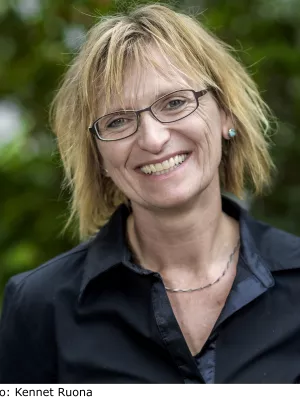
Natascha Kljun
Professor

Methane fluxes from a small boreal lake measured with the eddy covariance method
Author
Summary, in English
Fluxes of methane, CH4, were measured with the eddy covariance (EC) method at a small boreal lake in Sweden. The mean CH4 flux during the growing season of 2013 was 20.1 nmol m−2 s−1 and the median flux was 16 nmol m−2 s−1 (corresponding to 1.7 mmol m−2 d−1 and 1.4 mmol m−2 d−1). Monthly mean values of CH4 flux measured with the EC method were compared with fluxes measured with floating chambers (FC) and were in average 62% higher over the whole study period. The difference was greatest in April partly because EC, but not FC, accounted for fluxes due to ice melt and a subsequent lake mixing event. A footprint analysis revealed that the EC footprint included primarily the shallow side of the lake with a major inlet. This inlet harbors emergent macrophytes that can mediate high CH4 fluxes. The difference between measured EC and FC fluxes can hence be explained by different footprint areas, where the EC system “sees” the part of the lake presumably releasing higher amounts of CH4. EC also provides more frequent measurements than FC and hence more likely captures ebullition events. This study shows that small lakes have CH4 fluxes that are highly variable in time and space. Based on our findings we suggest to measure CH4 fluxes from lakes as continuously as possible and to aim for covering as much of the lakes surface as possible, independently of the selected measuring technique.
Department/s
- BECC: Biodiversity and Ecosystem services in a Changing Climate
Publishing year
2016-11-18
Language
English
Pages
41-50
Publication/Series
Limnology and Oceanography
Volume
61
Document type
Journal article
Publisher
ASLO
Topic
- Climate Research
Status
Published
ISBN/ISSN/Other
- ISSN: 1939-5590